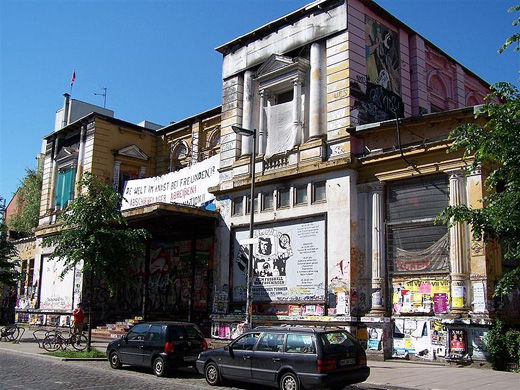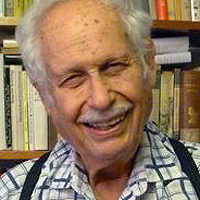
BERLIN – New Year’s Eve in Germany means fireworks! Near the Brandenburg Gate in Berlin, after pop stars softened up a crowd so tightly packed that cops waved away late-comers well before midnight, the city offered Europe’s biggest midnight fireworks display.
Unusual for many American visitors, however, is the amazing amount of family fireworks in almost every city street.
For 30 or 40 minutes, countless thousands of rockets whiz skywards (almost always!) and burst up there loud enough to panic any dog, cat or pigeon in the neighborhood – and any innocent pedestrian daring to walk past the celebrants.
Many save for months to buy those loud, brightly flying explosives. The churches call annually for a more charitable use of the money, but only the worst recession years saw any let-up.
“Aren’t they dangerous?” inquired an American visitor. “Sure!” was the retort. “Every year some get burned, lose a finger, even an eye. But nowhere so dangerous as all your pistols and assault rifles!”
Didn’t wait for New Year’s Eve
In Hamburg they didn’t wait for New Year’s Eve with the fireworks. Since 1989 a former vaudeville theater re-named Rote (Red) Flora has been occupied by squatters. It became a cultural and political center for meetings, concerts and rallying center for groups ranging from ultra-anarchists to some very dubious “left-wing” groups supporting neo-con positions in Palestine and Iran.
Despite sharp differences, they were a hippy, then a hip-hop bunch opposing rapid gentrification in an area once resembling Greenwich Village in its more rebellious, innovative days.
The city-state governments, whether Social Democrats or Christian Democrats, ruled the roost and tolerated Rote Flora even after the city sold the theater to a wealthy realtor in 2001. But then, after a successful solidarity concert supporting “Lampedusa” survivors of deathly Mediterranean boat trips who yearn to settle in Hamburg, the realtor suddenly decided to raze the building and build a big new center there, allegedly cultural but very commercial and very profitable.
Rote Flora people of all persuasions rebelled against their building – and two relics in Hamburg’s famous Reeperbahn red light and entertainment area – suffering the same fate as Germany’s traditional Christmas geese.
Quite properly they registered the time, route and expected size of a protest march on December 21 with the authorities. But like at an anti-bank protest march in Frankfurt last June, the cops had other plans. After a very few minutes and not many meters they blocked the march of about 8,000 people and ordered it to disband.
First they claimed that cobblestones and fireworks had been thrown at them. This was vigorously denied, with video proof, so police switched to a strange new excuse: the parade had started before the officially agreed time. As expected, the demonstrators got mad and some really began to throw things (in the past, the first hurlers were often suspected and sometimes detected agent provocateurs).
The police, obviously well prepared, immediately offered the usual response: water cannon, pepper spray and batons. The ensuing battle, which spread during the night to the Reeperbahn area, had bitter results; the police claimed injuries to 120 in uniform, with 19 sent to the hospital, while the demonstrators said over 500 of their number were badly hurt.
As for the Lampedusa refugees – they had luckily held a meeting far from the action, saying they did not want to be held responsible for actions in their name but also accusing the police of provoking trouble: “We will not permit our protest to be misused in such a fashion.” The fate of Rote Flora is still uncertain. Was this pre-Christmas episode an omen for 2014?
Another confrontation looming?
Indeed, another confrontation may be in the offing for Berlin in mid-January. Over a year ago a group of refugees, including families, mostly from Africa or the Middle East, walked 300 miles from Wurzburg in Bavaria to protest miserable conditions during the often-yearlong periods when their applications for asylum await decisions.
Shoved into out-of-the way camps, often run-down former military barracks, cut off from towns or cities, with minimum rations, not allowed to work, not allowed to leave the county they are assigned to, even to visit relatives, in the end they are often locked up like criminals and deported, sometimes by brutal force. The protesters camped near the Brandenburg Gate at first, and then were forced to leave but permitted to camp in a public square in the internationally mixed borough of Kreuzberg, where Berlin’s only Green mayor presided, a rare left-wing Greener.
They spent a winter and a summer there, while about twenty returned to the Brandenburg Gate for a desperate hunger strike. In icy weather the police permitted their presence but neither tents nor sleeping mats or chairs.
No political concessions have yet been offered, but many were given dry winter quarters on a temporary basis in church facilities. But some decided to remain in their tents on Oranienplatz (Square) in order to continue their public campaign for their rights, including an information tent for passers-by and joint cooking and meeting space.
Now Interior Senator Frank Henkel (in Berlin cabinet ministers are called senators) is insisting that they leave the square by Jan. 16 or else! Monika Herrmann, the new, also progressive Green borough mayor, is trying to mediate.
After long defending their right to remain, she now says: “I want the tents removed, just like the Interior Senator, but I warn against using force which could lead to total escalation. And of course I am afraid that here in Berlin’s Kreuzberg borough we could see things happening like in Hamburg… The presence of a few tents isn’t worth a situation where people get injured, either police officers or demonstrators.”
But the decision by Henkel, who is also Berlin’s deputy mayor in the city-state coalition of Social Democrats and his own Christian Democrats, has led to plans for big demonstrations by opposition groups, extending from moderate Greens halfway around the political compass to ultra-left wingers, including the stone-throwing, shop-window smashing bunch – probably with provocateurs to spice things up again. Anything can happen!
Immigration a major issue
Henkel is typical for many in his party and, even worse, in its Bavarian sister party, the Christian Social Union (CSU), who have been revving up fears and hatred against Rumanians and Bulgarians who, as European Union members, will be permitted to move to western Europe after Jan. 1.
Germany expects 100,000 or 200,000 temporary or permanent immigrants. While many are doctors, engineers and professionals, the majority are not. But while the statistics prove that the immigrants, their labor, their taxes and their children are actually a boon to the economy, those on the right only increase their ranting about the “continuing misuse of European travel freedom for poverty migration,” helped by all those in the media who stoke fears of “free loaders and criminals.”
As in times past, the immigrants are useful scapegoats – like the Turks here, the Algerians in France, Moroccans in the Netherlands, and the Roma (“Gypsies”) and Jews in Hungary. Such hate propaganda is great breeding ground for menacing fascistic groups – from Saxony to Slovakia, from Athens to Arizona.
Such matters were very relevant for delegates to the Fourth Congress, in Madrid, of the Party of European Leftists, a rather remarkable mix of over 30 very different parties. Some still use the name Communist Party – in France, Spain, Belgium and the Czech Republic, the German party is named The Left (but the small German Communist Party – DKP – is also a member).
Some, as in Switzerland and Hungary, are called the Workers’ Party. Relatively strong are the parties in Greece, Cyprus, Portugal and Germany; others are tiny grouplets, “tried and true” remnants of past years in East and West. Many complain of the ineffectiveness thus far of the organization, which was founded in 2004, and the need to join against the disastrous austerity strategy of the Merkel government and the bankers.
As always on the left side of the political spectrum, there is a split: some more “orthodox” left-wing parties in Europe (also with ties to other continents) reject this outfit entirely and meet separately and, they would say, far more purely.
A main difference between the groupings: one is critical of the European Union but wants to remain within it, while pushing on social issues, for more democracy, against further militarization. The other group rejects the European Union completely as a device to block progress towards socialism.
In some countries, where there are parties belonging to both groups, they both try to send delegates to the European Parliament meeting alternately in Strasbourg and Brussels, whether they oppose it or not. Of the 751 delegates 35 belong to its left-wing caucus, where they try somehow to cooperate in opposing the stronger caucuses to the right.
In all 28 member countries elections are due at the end of May and the European Left hopes to increase its size to about 50 – thanks to the growth in strength of the Syriza Party of Greece, whose head, Alexis Tsipras, 39, will lead its international campaign. This will be no easy task. Aside from the differences among those on the left, there is sharp rejection of the European Union in the poorer countries (and in Britain) and prevailing disinterest in economically luckier ones like Germany, often goosed – in all of them – by sarcastic media jabs.
The Left Party of Germany, a key member thanks to its size and its connections in both East and West Europe, will be fighting an uphill battle to get out the vote. It hopes to keep or even raise the number of its European delegates, now standing at eight.
While trying to inspire often reluctant voters to go to the polls in May, it is also more than occupied working out its own positions, with differences possibly re-emerging after a relative armistice leading up to the September elections.
It has become the main opposition party in the Bundestag, beating out the Greens by just one seat. But even together they have only a measly 20 percent of the seats, overwhelmed in votes by the Christian Democratic-Social Democratic ruling coalition.
Will the two work together or squabble in the fight to get heard? Should they work together – now that the politically drifting Greens have joined right-wing Christian Democrats in the state of Hesse in an unholy alliance? Will some Social Democrats rebel at nasty compromises made by their leaders in their comfy government cabinet armchairs?
There are plenty of questions open in 2014 – with hopefully some wins – in the street and shops if not in the Bundestag – plus few losses – and no fireworks of a military or otherwise bloody nature. Happy New Year!
Photo: Hamburg’s former vaudeville theater re-named Rote (Red) Flora, occupied by squatters. Wikipedia CC 3.0.










